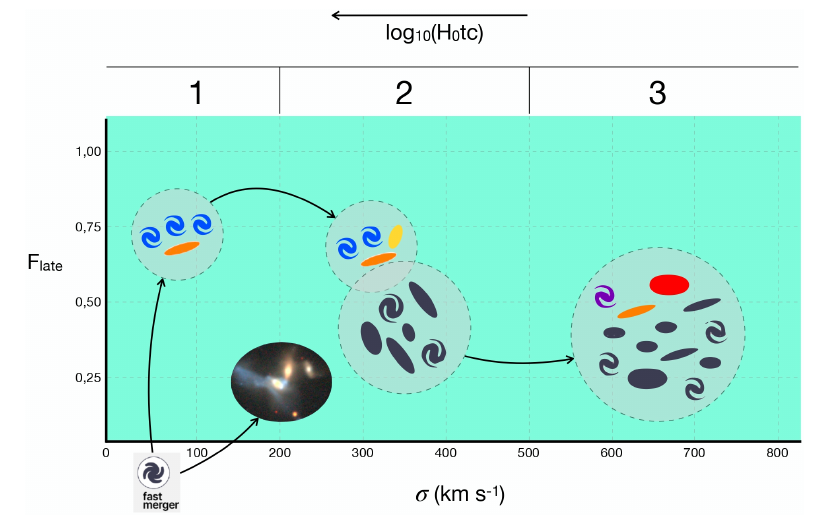“Galaxy evolution in compact groups”
Dra. Gissel Pardo Montaguth (IAG – Universidad de Sao Paulo, Brasil)
Viernes 13 de diciembre, 2024, 13 h, Salón Meridiano
Resumen: Compact groups (CGs) provide a valuable opportunity to study how galaxy interactions influence physical and structural parameters due to their high density and low-velocity dispersion. We investigated a sample of 340 CGs, including 1,092 galaxies, and compared it with a control group of 2,300 field galaxies to explore these effects. Our analysis of the Effective Radius–Sérsic Index (Re-n) plane revealed a bimodal distribution among transitioning galaxies in CGs. We define the transition galaxies as those with redder colors (u-r > 2.3) and Sérsic indices (n < 2.5). This suggests the presence of a distinct population of smaller, more compact galaxies in CGs, a population that is absent in the control sample. This observation indicates that galaxies in CGs may undergo significant morphological changes. Around 27% of the CGs are part of larger groups, which we classify as non-isolated CGs. Transition galaxies in isolated CGs are more likely to cluster in a denser region of the Re–n plane when n < 1.75. In contrast, transition galaxies in non-isolated CGs show a more gradual increase in n values, indicating that these galaxies have experienced morphological transformations and are the main contributors to the distribution of more compact galaxies in the Re–n plane among all transition galaxies in CGs. Moreover, galaxies in non-isolated CGs display lower specific star formation rates and a higher proportion of quenched galaxies compared to their isolated counterparts. Furthermore, a spatially resolved analysis was performed using integral field spectroscopy (IFS) data to study both ionized gas and stellar components in 549 galaxies in CGs and 1,098 field galaxies. Galaxies in CGs tend to have older stellar populations, although star-forming galaxies show similar ΣSFR profiles to those in the field. However, galaxies with nuclear activity in CGs exhibit higher ΣSFR values and flatter slopes. No significant differences were found in the metallicity gradients between CG and field galaxies. In summary, we highlight the critical role of the environment in the evolution of galaxies in CGs, emphasizing how dense environments and interactions accelerate morphological transformation and the quenching process.


